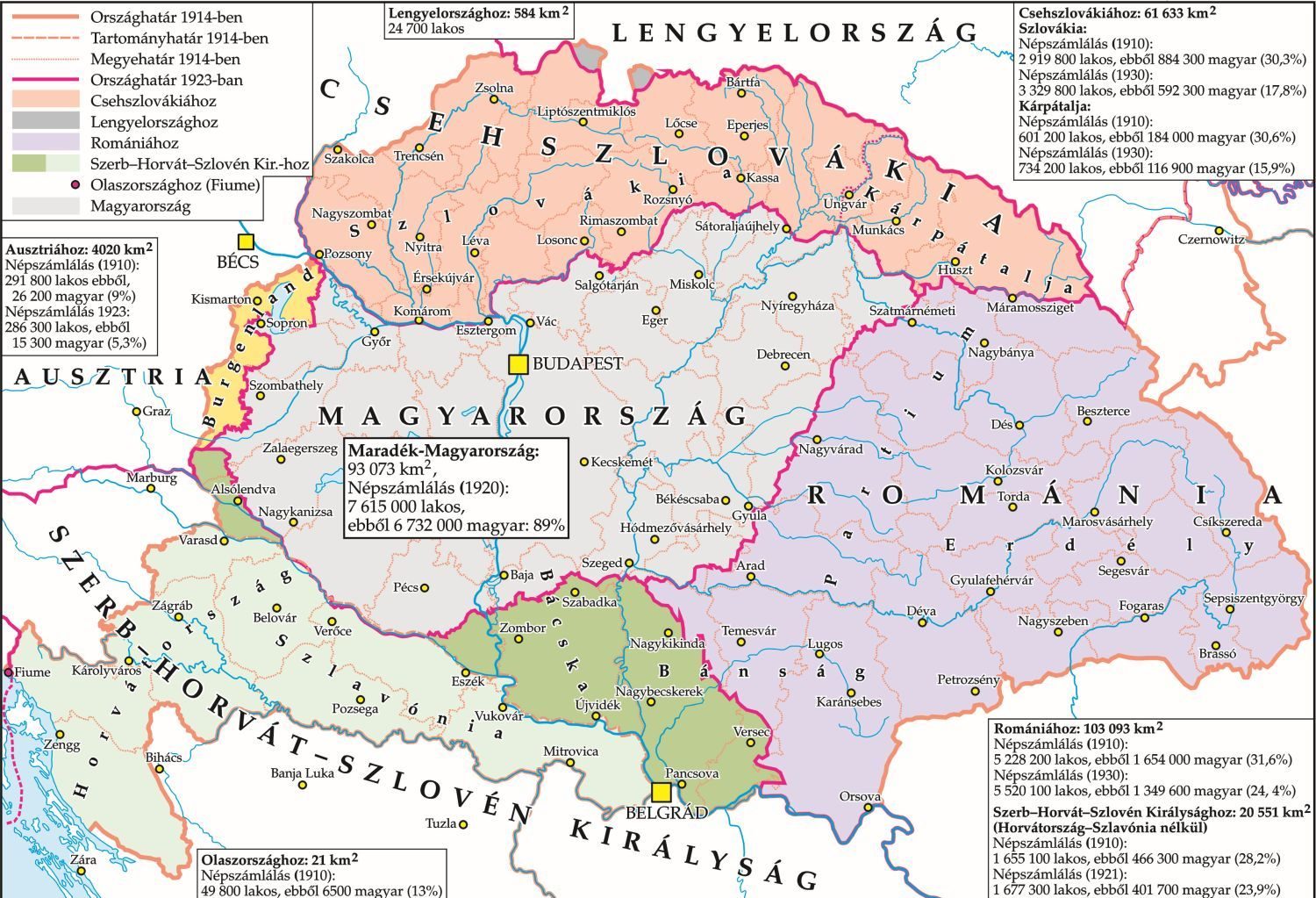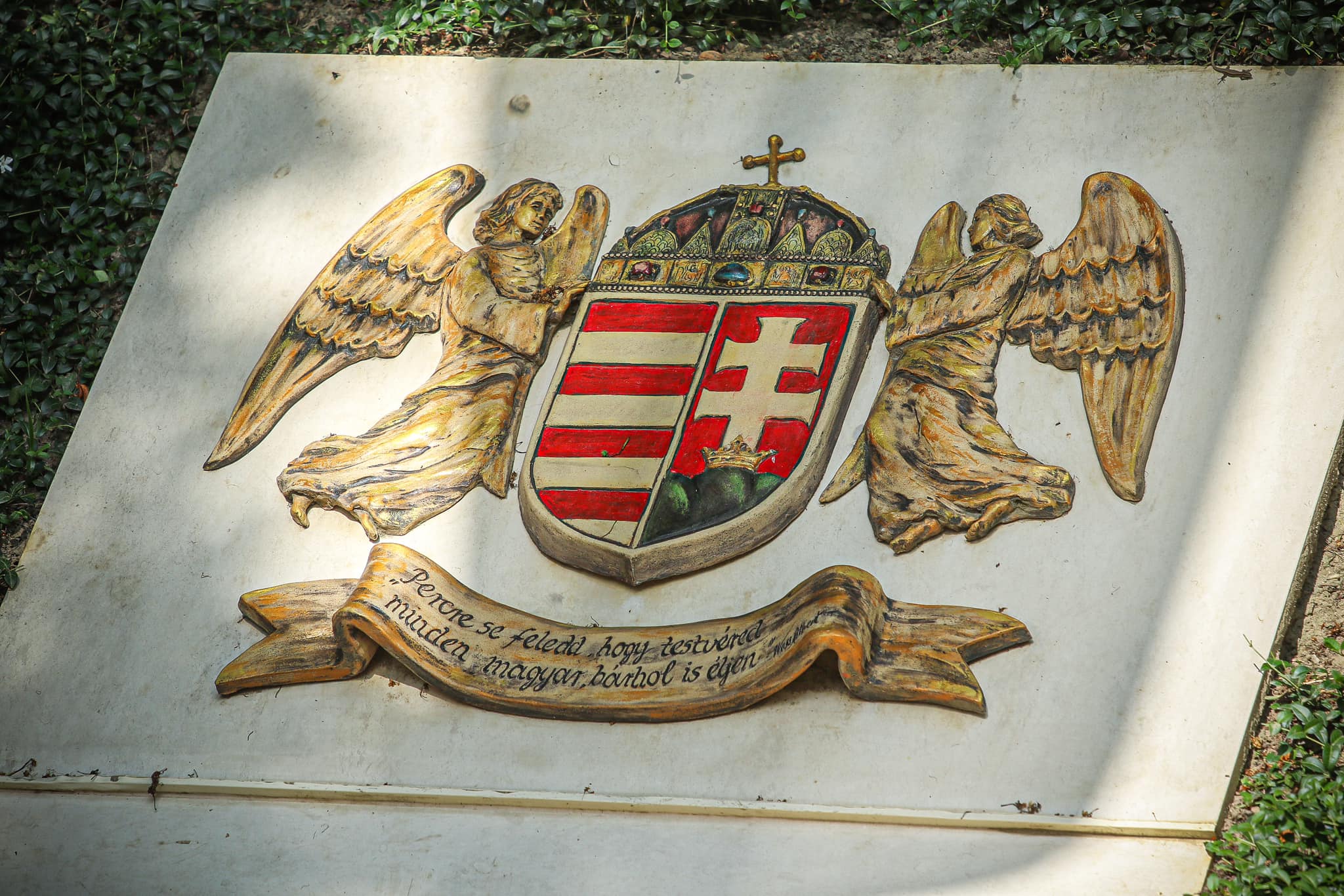
The Trianon peace treaty was signed 103 years ago.Continue reading

The Day of National Cohesion is a national day of remembrance commemorating the anniversary of the signing of the 1920 Trianon Peace Treaty, which tore apart Hungary and two-third of the country’s territory was allocated to neighboring states. In 2010, Parliament passed a law stating that “all members and communities of the Hungarian nation under the jurisdiction of several states are part of the united Hungarian nation, whose cohesion across state borders is a reality and a defining element of the personal and communal identity of Hungarians.” On the occasion of the Day of National Cohesion, commemorations were held in several places across the globe on Sunday, June 4.
Speaking at a commemoration in Dombóvár in southern Hungary on Sunday, Árpád János Potápi, State Secretary for National Policy of the Prime Minister’s Office, said that June 4 has been a day of mourning for a long time, but since 2010, we have also been saying that we can gain strength from Trianon. He added that the Day of National Cohesion does not want to forget the loss, nor could it.
Looking back over the 100 years since the Treaty of Trianon, the Hungarian people are “alive and well despite all odds, the greatest nation in the Carpathian Basin,”
he added.
The politician highlighted that 2010 was the year of the regime change in Hungarian national policy, and from then on a new period had started based on the survival of the Hungarian nation. The most important achievement of the 13 years since then has been the strengthening of the awareness, feeling, and experience of national belonging, he emphasized.
On Saturday, Potápi also visited Torockó (Rimetea) in Transylvania, Romania, where he spoke about how we should not be divided, but united by our common culture, our common history, our common mother tongue and customs, despite all difficulties.
Orbán also commemorated the Day of National Cohesion. In a Facebook post, the prime minister shared Pál Kalmár’s song titled Hungary, you are beautiful, you are wonderful (Szép vagy, gyönyörű vagy Magyarország), to which he wrote: “We belong together.”
Chief advisor to the prime minister, Katalin Szili, attended a commemoration on Sunday held at the final resting place of Count Albert Apponyi in Éberhárd (Malinovo), in the Felvidék (formerly part of Hungary, now Slovakia). Apponyi was the head of the Hungarian delegation at the 1920 Paris Peace Conference when the Trianon peace treaty was signed.
Szili stressed that we must respond to the challenges of the present as a strong nation. In her speech, she pointed out that in the 103 years since Trianon, the Hungarian nation has already proven that it is a united nation despite the dividing borders, but at the same time it must be made clear to neighboring states that the aim is not to change the current status quo, but to create a unity and cooperation in the current European situation that will also create a possible new European center of gravity.
Krisztián Forró, chairman of the Alliance, was also present at the commemoration. The Alliance is a political party in Slovakia that was founded by merging three political parties representing the Hungarian minority: the Party of the Hungarian Community, Most–Híd, and MKÖ–MKS.
The chairman said that in Trianon they tried to divide the Hungarians, and after the Second World War they tried to further weaken the Hungarian nation, but despite this, after more than a hundred years, it can be said that there are still about half a million Hungarians living in the Felvidék and want to prosper there. However, the future of the Hungarian community in the region will largely depend on the results of the Alliance and thus of the Hungarian community in the early parliamentary elections in September.
Meanwhile, not only in neighboring countries, but also in countries as far away as the United States, commemorations were held on the occasion of the Day of National Cohesion.
Andrea Lauer Rice, president of the Hungarian American Coalition, pointed out in an interview with Hungarian public media that
according to the latest US census data, more than 1.4 million of the country’s population identify themselves as Hungarian or of Hungarian origin.
The head of the largest Hungarian umbrella organization in the US said that the Hungarian community in the US has more than 100 organizations, 78 churches, 33 Hungarian schools, 25 scout troops, 12 Hungarian houses, museums, and libraries. There are Hungarian communities in almost every state, she added.
For the future, the Hungarian American community faces two major challenges, said Andrea Lauer Rice.
One is the involvement of the younger generation in the life of the diaspora, where the two most important organizations are the Hungarian Scouts Association Abroad and the network of Hungarian weekend schools. The second challenge, she said, is to involve as much as possible those who do not speak Hungarian in the life of Hungarian communities.
She pointed out that of the 1.4 million Americans who consider themselves Hungarian or of Hungarian descent, about 1 million do not speak the language, they are typically second, third, or fourth generation US residents. At the same time, they are aware of their roots, so it is important to pass on the Hungarian heritage to them through diaspora organizations, the president of the Hungarian American Coalition emphasized.
Featured photo via Facebook/Árpád János Potápi